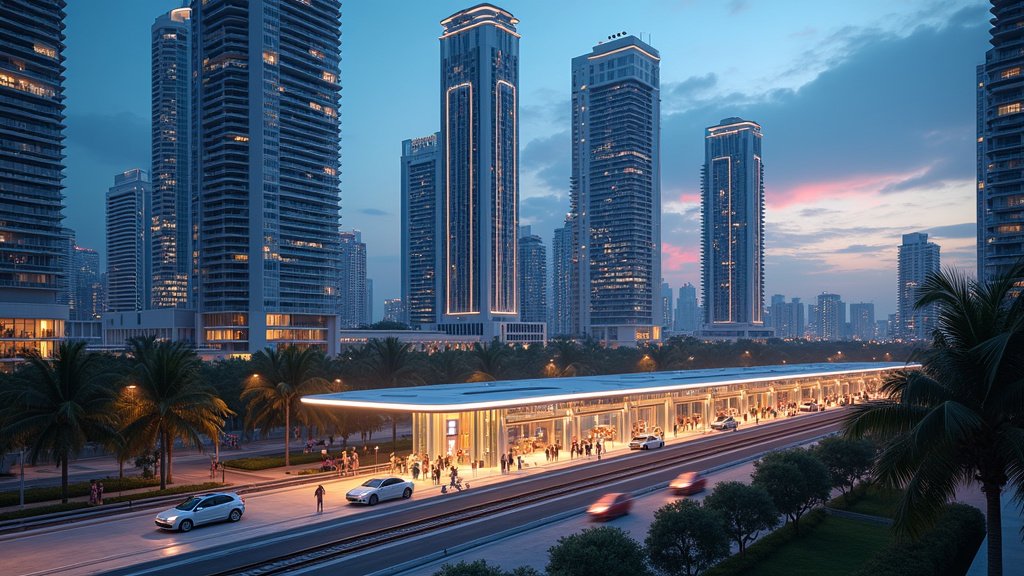Miami Embraces Transit-Oriented Development with New High-Rise Incentives
Miami is taking a significant step to reshape its urban landscape and encourage more sustainable living patterns. The city has announced a new suite of incentives designed to spur the development of high-rise buildings located within a mile of its commuter rail stations. This strategic move aims to cultivate greater density and enhance accessibility around key transit hubs, marking a pivotal moment in the city’s ongoing efforts toward urban growth.
Boosting Density and Accessibility
The core of this initiative lies in offering tangible benefits to developers who commit to constructing taller structures in these strategically chosen transit-adjacent zones. By incentivizing vertical development, Miami seeks to create more vibrant, walkable communities centered around its public transportation network. The goal is to make it easier for residents and visitors alike to access the city’s amenities without relying heavily on personal vehicles, thereby reducing traffic congestion and promoting a more efficient use of urban space.
This policy is more than just an urban planning tweak; it represents a broader vision for Miami’s future. It is intrinsically linked to a comprehensive strategy aimed at fostering sustainable urban growth. In an era where environmental consciousness and efficient resource management are paramount, encouraging development near transit lines offers a compelling solution. It’s a forward-thinking approach that aligns with global trends in urban development, where connectivity and reduced carbon footprints are increasingly prioritized.
The Strategy Behind the Initiative
The decision to target areas within a mile radius of commuter rail stations is deliberate. This proximity is considered a sweet spot for transit-oriented development (TOD), offering residents convenient access to their workplaces, retail centers, and recreational activities. By making these areas more attractive for developers, Miami hopes to see a surge in residential and mixed-use projects that cater to a growing population seeking convenient and eco-friendly living options. The news is certainly trending among urban planners and real estate developers.
The city’s leadership believes that by concentrating development around transit nodes, they can achieve several key objectives simultaneously. Firstly, it supports the existing public transportation infrastructure by increasing ridership, making the rail system more viable and efficient. Secondly, it can help alleviate pressure on other parts of the city that may already be experiencing over-development or lack sufficient public transport access. Finally, it promotes a more compact urban form, which is generally more energy-efficient and reduces the need for sprawling development that can encroach on natural habitats.
What Developers Can Expect
While the specifics of the incentives are yet to be fully detailed, the announcement signals a clear commitment from the city to facilitate these types of projects. Developers who engage with this program can anticipate benefits that could include streamlined permitting processes, potential tax abatements, or zoning concessions that allow for greater building heights and densities than typically permitted. These advantages are intended to offset the costs and complexities often associated with large-scale, high-rise construction, making these transit-adjacent projects more financially feasible and attractive.
The ultimate objective is to create a positive feedback loop: more people living near transit leads to more transit use, which in turn supports and potentially expands transit services, further enhancing the attractiveness of these areas for development and residents. This integrated approach is crucial for building a resilient and thriving urban environment.
A Vision for a Sustainable Miami
This policy underscores Miami’s dedication to building a more sustainable and livable city for the future. By strategically encouraging high-rise development in proximity to its rail network, the city is actively working to reduce its carbon footprint, combat traffic congestion, and enhance the quality of life for its residents. The ongoing news surrounding these developments highlights a city that is proactively addressing the challenges of urban growth in the 21st century, making Miami a prime example of forward-thinking urban planning.
The impact of these incentives is expected to be significant, potentially leading to the creation of new urban centers that are well-connected, environmentally conscious, and economically vibrant. As Miami continues to grow, this focus on transit-oriented development is a critical component of its long-term success and sustainability strategy.
This exciting development in Miami’s urban planning circles promises to reshape the city’s skyline and its approach to mobility, making it a noteworthy trend to follow in the coming years.





